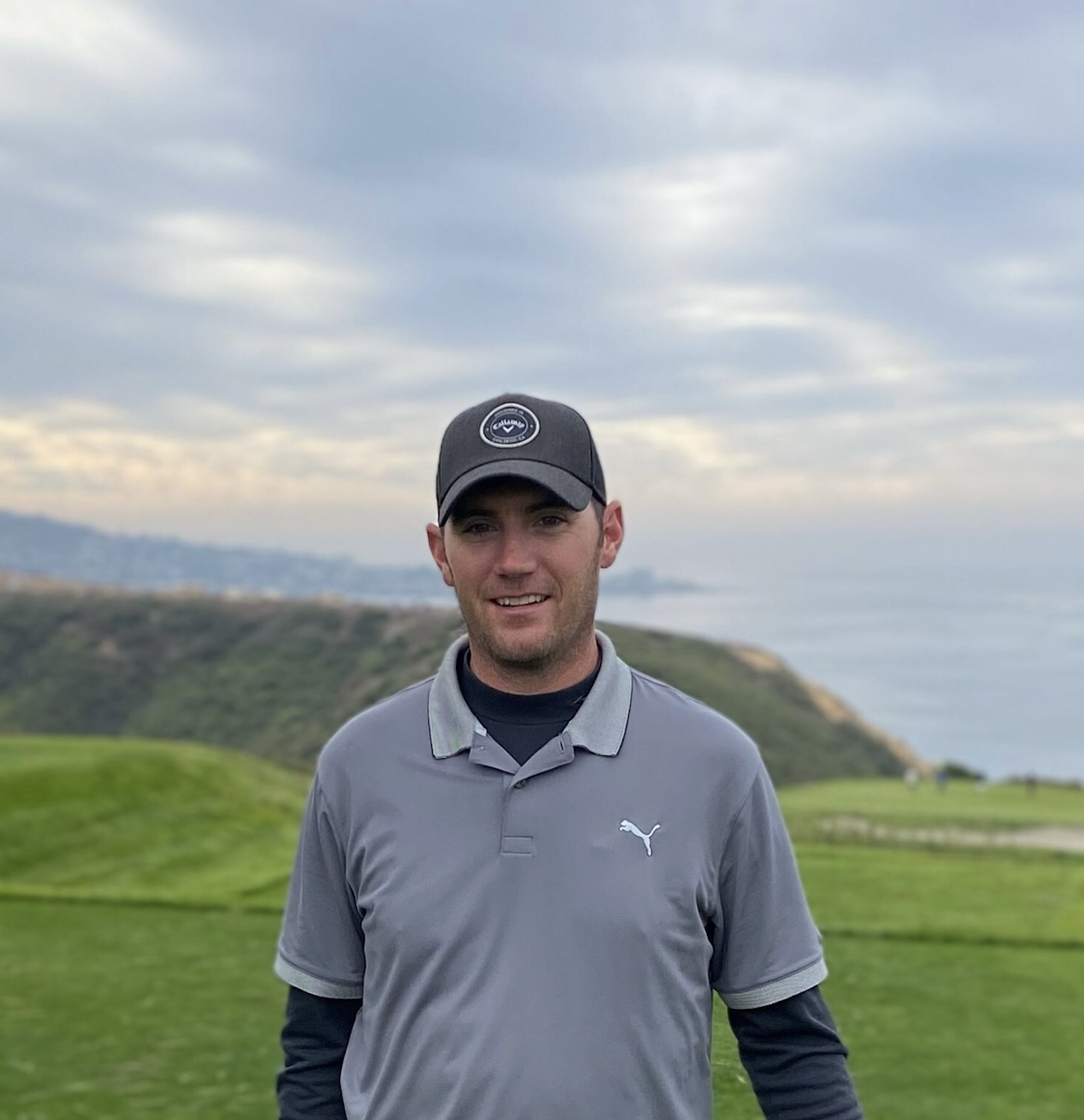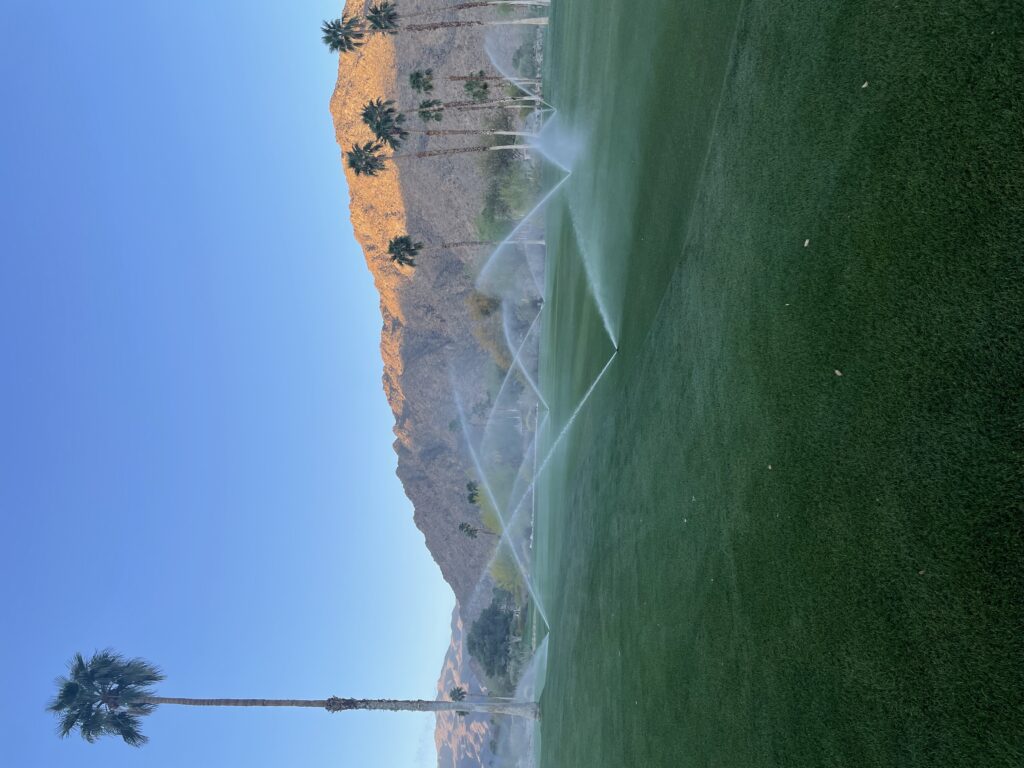By Pat Jones|Ironwood CC superintendent Nathan Glaser has a sophisticated irrigation system and can move water anywhere, but he relies on Zipline® to keep it where it needs to be for a full 28 days.

Nate Glaser left 1,000 acres of Minnesota corn and soybeans behind when he decided to pursue golf instead of staying on the family farm. He traded those green midwestern fields for the challenges of maintaining championship golf conditions in the daunting California desert. For the last decade, he’s been caring for the fabulous Ironwood CC in the golf-rich Palm Springs area.
Not surprisingly, his agronomic world revolves around water management. Each of the region’s typical water sources (Colorado River, effluent or groundwater) has a particular set of issues because of dissolved solids, salts, and heavy metals. Glaser considers himself lucky to be on groundwater at Ironwood but it’s hardly free: operating giant well pumps and moving water up a mountain is not cheap or easy.
“The course is built on the side of a mountain and it’s all bedrock under us, so our well pumps are offsite down the hill. We pump up to retention ponds on the golf course.” He’s fortunate to have a newer Rain Bird system that he can run from his phone to handle the constantly shifting process of water management. “It’s so convenient. You can monitor everything no matter where you are.”
But no matter how sophisticated the delivery of the water might be, the issue is always the same: “There’s no rain so learning to manage the water and the byproducts of not having natural rainfall – like mineral buildup – is critical.”
Thus, consistent distribution of water is always top of mind for Glaser, and he values the help he gets from Aquatrols. “I’ve always been a fan of Aquatrols. I’ve used their products most of my career. I really liked Revolution® and relied on it for years.” However, he was ready to try something new, and when Zipline came along he fell in love. “I think it has a longer-lasting effect,” says Glaser.

His big focus is on keeping conditions excellent through the spring when temperatures start to rise. “Our membership is incredibly busy on the course until about the first of May until everyone goes back home up north. We really struggle to keep ryegrass green into March and April when we’re in triple digits. Keeping a cool-season plant alive when it’s 109 and you’re growing it on rock and gravel is not easy. That’s why Zipline is such an effective tool for us.”
His Zipline program includes greens, tees, fairways, and approaches. He particularly relies on monthly apps (“a nice heavy dose”) in spring to deal with rising heat. He says the visual evidence of healthier, greener turf is amazing.
Glaser comfortably gets a full 28 days from Zipline to combat LDS on his MiniVerde putting surfaces. “The species is a thatch producer so we’re always battling organic matter in the top inch or so. I think Zipline really helps fight the hydrophobia from that organic level.”
Like many desert supers, he combines Zipline with serious cultural practices to keep his thatch layer under control. “We go at it a bunch of different ways: we do very, very frequent light topdressing and then even more topdressing when we do pull cores. We also use DryJect. Overall, I try to remove 30% (of the organic) a year, which is pretty aggressive, but MiniVerde produces 7 times more thatch than TifDwarf. We’ve learned that it’s very, very important to watch those organic levels in that top inch.”
He likes Zipline’s performance but its longevity is what really stands out for him.
“I think that it’s as good as anything, but it lasts longer.” In addition to his regular greens program, he applies Zipline on his fairways regularly. He simply adds it into the tank with his liquid foliar program.
He focuses on tees during spring warm-up. “We’ll spray Zipline on tees mid-March until full transition. We’re battling the ryegrass die-off through transition. Guys that are really good at that transition – their members don’t even realize it’s happening. Eventually, your ryegrass is dead and your Bermuda grass is there and if you do it right it happens very gently.”

What’s the key to good water management for Glaser?
“Just being diligent with irrigation adjustments from season to season. There’s no being ‘done.’ Those adjustments change seasonally so you just have to constantly be on it.”
Why does he value the options Aquatrols gives him?
“I like their products and they work really well. As a superintendent, you go with what you feel your best option is and they are definitely my best option.”


Comments are closed.